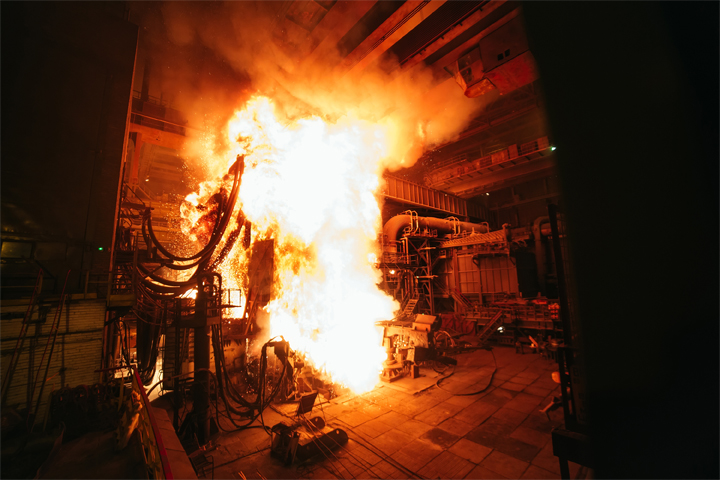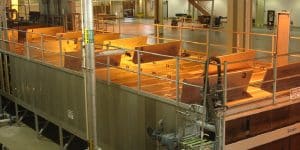 When dust, in the right concentration, meets an ignition source in an enclosed space, it tends to explode. The obvious answer is to eliminate dust from processing operations, but that’s not always easy to do. It’s especially difficult with spray drying, which is a process engineered to create dust. To address this, responsible manufacturers understand and plan for the spray dryer explosion risk in their facilities.
When dust, in the right concentration, meets an ignition source in an enclosed space, it tends to explode. The obvious answer is to eliminate dust from processing operations, but that’s not always easy to do. It’s especially difficult with spray drying, which is a process engineered to create dust. To address this, responsible manufacturers understand and plan for the spray dryer explosion risk in their facilities.
Equipment design plays a role in prevention and mitigation, but the starting point is to understand why spray dryers pose such a challenge. Here’s a closer look.
SPRAY DRYING PROCESS
Spray drying, according to the Institute of Food Technologists (IFT), was invented in 1872 as a way of making powdered milk. Since then its use has spread throughout the food industry and into a wide range of other manufacturing sectors.
Spray drying is performed by two pieces of equipment linked in series. A wet slurry is sprayed into the top of a chamber and is atomized into a fine mist as it enters. Gas or air heated to between 400 °F and 1,000 °F is blown through the chamber. This evaporates moisture from the feedstock and leaves a fine powder or dust in the air. (The actual temperature used depends on the type of material being dried.)
This dry, airborne dust is moved through to a separator that pulls it out of the air. In most set-ups, this is done by a cyclone. After separation, the powder usually goes into a packaging area.
THE SPRAY DRYER EXPLOSION RISK
Not all materials produce a “combustible dust” when spray dried, but the list of those that do is lengthy. (An OHSA poster lists over 100 combustible dusts, including many agricultural and food products.) Combustible dust is defined by the National Fire Protection Association (NFPA) as one where the particles are smaller than 0.420 mm (0.016”) in diameter.
When particles this small are airborne the effect is to create a pre-mixed fuel. It’s a little different from having gasoline in the air, and if the fuel-to-air concentration is right the mixture will burn. Unlike a conventional flame though, this dust-air mix burns a manner called deflagration. This is where the flame front expands rapidly through space.
PREVENTING SPRAY DRYER EXPLOSIONS
As the process is designed to create airborne dust, prevention comes down to eliminating ignition sources and minimizing the available fuel. Both of these are addressed through a combination of equipment design and good operating practices.
When designing equipment the engineering team must understand and plan for spray dryer explosion risks. One avenue is to eliminate all possible ignition sources from the drying chamber. These can include electrical sparks, (due to static build-up as well as wiring deficiencies,) and friction in bearings. Where the drying air comes straight from the combustion source, as opposed to indirect heating, there’s a possibility of embers or sparks being carried along into the dryer.
The second prevention measure is to ensure there are no places in the chamber where dust can accumulate. This means designing a structure with the smoothest possible interior surfaces and then ensuring it’s fabricated exactly to print—close attention to detail is essential.
EXPLOSION MITIGATION
Given there will always be some risk of explosion in a spray dryer, it’s important to engineer the equipment accordingly. Key elements are:
- Incorporate pressure detectors in both dryer and separator that will sense the flame front
- Install high rate discharge suppressors that will attempt to smother an expanding flame front
- Build automatic shutdown capabilities into the equipment control system
- Put a valve in the pipe between dryer and separator to prevent an explosion in one spreading through to the other
- Incorporate explosion relief vents and doors that will duct air to outside the building
PLANNING FOR EXPLOSION EVENTS
Management in a facility that uses spray drying equipment should understand the risk of explosion and plan accordingly. Contingency plans should be developed and put in place that covers both prevention and mitigation. This means defining maintenance and cleaning schedules as well as emergency shutdown steps and evacuation procedures.
As noted previously, spray drying is inherently hazardous as it’s a process designed to create pre-mixed fuel.
ANTICIPATE AND PREPARE FOR SPRAY DRYER EXPLOSION RISKS
Spray dryers present a very real explosion risk. Regardless of the prevention measures employed, it’s always possible that something will go wrong. When that happens, explosion relief vents and doors will play a vital role in protecting your equipment, your buildings, and your employees from serious harm. Learn more below.





 Contract
Contract Food & Bev
Food & Bev